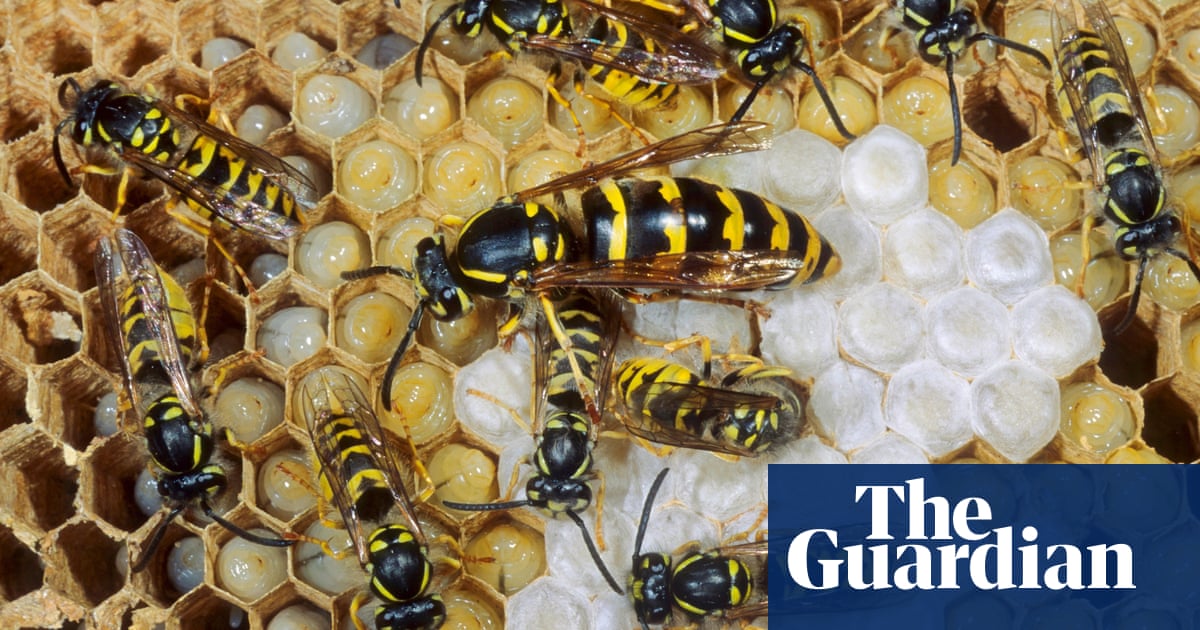When I am asked to choose my favourite insect, I have no hesitation in choosing the common wasp (Vespula vulgaris). I have been stung many times, having first fallen into a wasp nest at 5 years old though spared many of the stings by wasps entangled in the thick sweater my great-aunt had knitted.
But the wasp gets your attention and causes a reaction. It is perhaps the marmite of the insect world, you love it or hate it but you’re never indifferent and that gives me something to work on.
Wasps are in fact extremely valuable to people. They carry out pollination; an adult wasp’s main diet is nectar, which means it also carries pollen from plant to plant. And wasp nests provide a safe nursery ground for the larvae of some of our most spectacular pollinating hoverflies including the impressive Hornet Hoverfly (Volucella zonaria).
Wasps are also one of nature’s chief pest controllers. They go out hunting for their larvae, and bring back flies, aphids, caterpillars and many other invertebrates. And they are incredible architects, building paper nests from chewed up wood.
A wasp queen will begin by building a cylindrical column known as a petiole which she covers in a chemical she produces to repels ants. When she has finished, she produces a single cell and surrounds it with a further six cells, giving the cells their characteristic hexagonal shape. She continues building cells in a layer until she has 20-30 then lays an egg in each. Once the eggs have hatched she divides her time between feeding the larvae and nest building.
At full size, larvae spin a cover over their cell until they emerge into adult workers. The workers gather proteins to feed further larvae and sugars to feed themselves while they continue with nest building. When a worker wasp brings food to the developing larvae, the larvae return the favour by excreting a sweet honey-like gift for the worker. With enough adults fully grown the queen can focus on reproduction and is in turn fed by the workers. Each nest may contain 5,000-10,000 individuals and is spherical in shape.
Towards late summer the nests are at maximum capacity, with lots of adults and few larvae. New queens and male drones emerge from the nest; after mating the new queens overwinter in sheltered locations and the drones die (just as with their close cousins the ants and the bees).
A worker wasp measures about 12-17mm in length. The queens are larger, measuring around 20mm in length. Most worker wasps will only live as adults for a few weeks but the queen will hibernate underground to lay her eggs in summer so may survive for up to a year. The colonies last just one year and once the new queens depart, the other wasps in the colony die as the winter frosts come.
Wasps have a sting to allow them to capture and immobilise their prey. They may also sting to defend their nest. Wasps navigate via geo-location of large objects, this is the reason they will often circle people as they are mapping where we are which must be frustrating if we are moving.
So the worker wasp is born into a job for life, and paid in a sweet currency that is not available elsewhere. In late summer, when the new queens have flown the nest, the worker wasps are faced with the loss of job and purpose, as well as the loss of the sweet substances to which they have become addicted.
Perhaps that is why they’re drawn to humans, who often surround ourselves with the sweet supplements such as jam and beer to which they are attracted. But humans are big and threatening and we wave our arms at the wasps, who feel threatened, and then sting. If only there was a wasp welfare state we would all learn to love them.
-
Paul Hetherington is Director of Fundraising and Communications at the charity Buglife
-
Welcome to the Guardian’s invertebrate of the year competition! Every day for the next two weeks we’ll be profiling one of the incredible invertebrates that live in and around the UK. Let us know which invertebrates you think we should be including here. And at midnight on Friday 12 April, voting will open to decide which is our favourite invertebrate – for now – with the winner to be announced on Monday 15 April.



